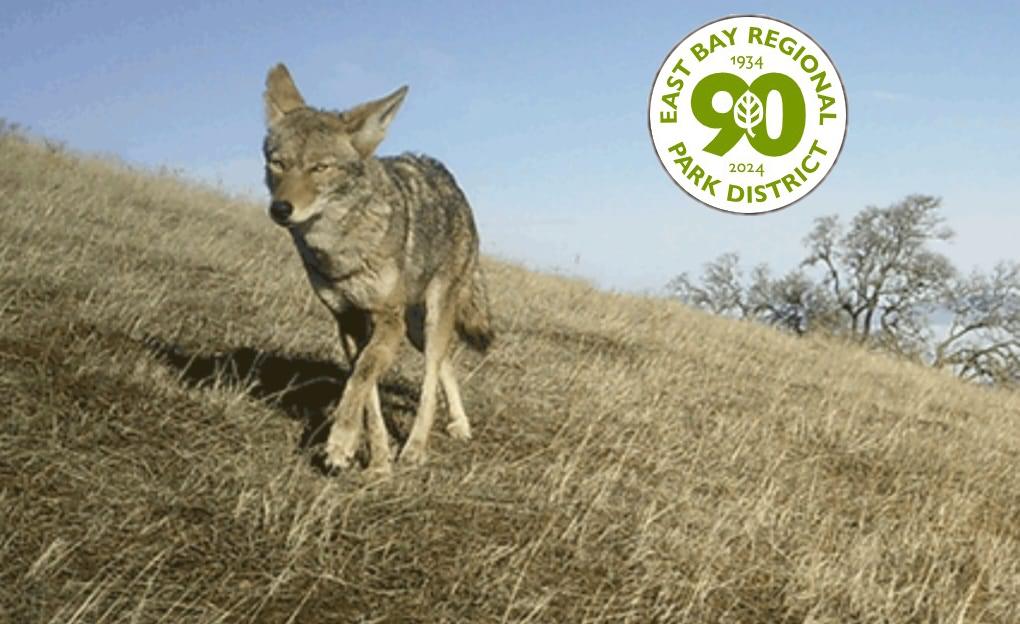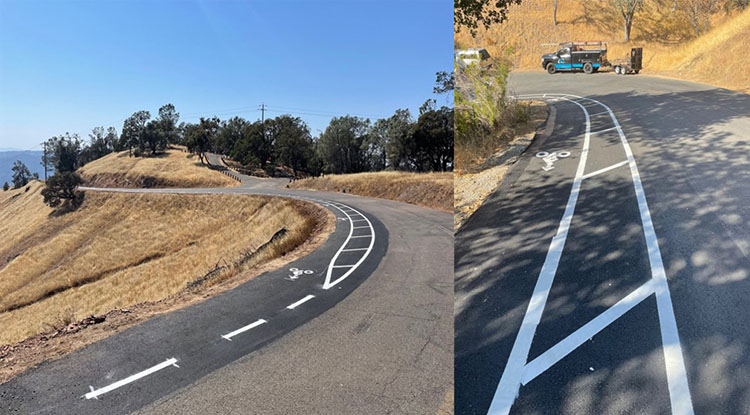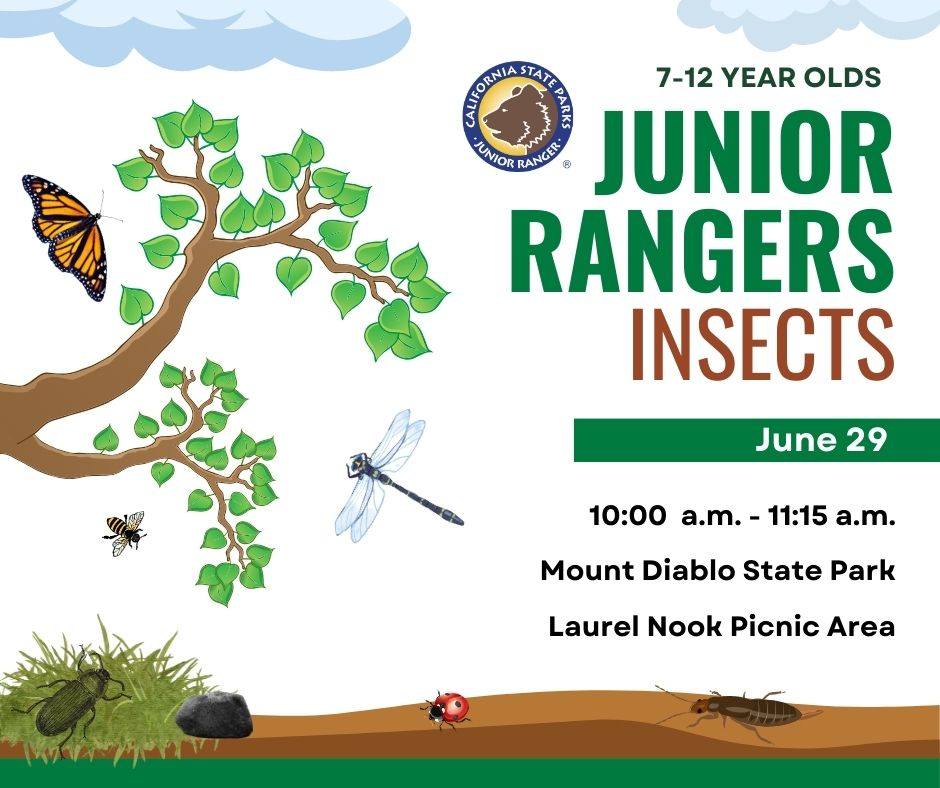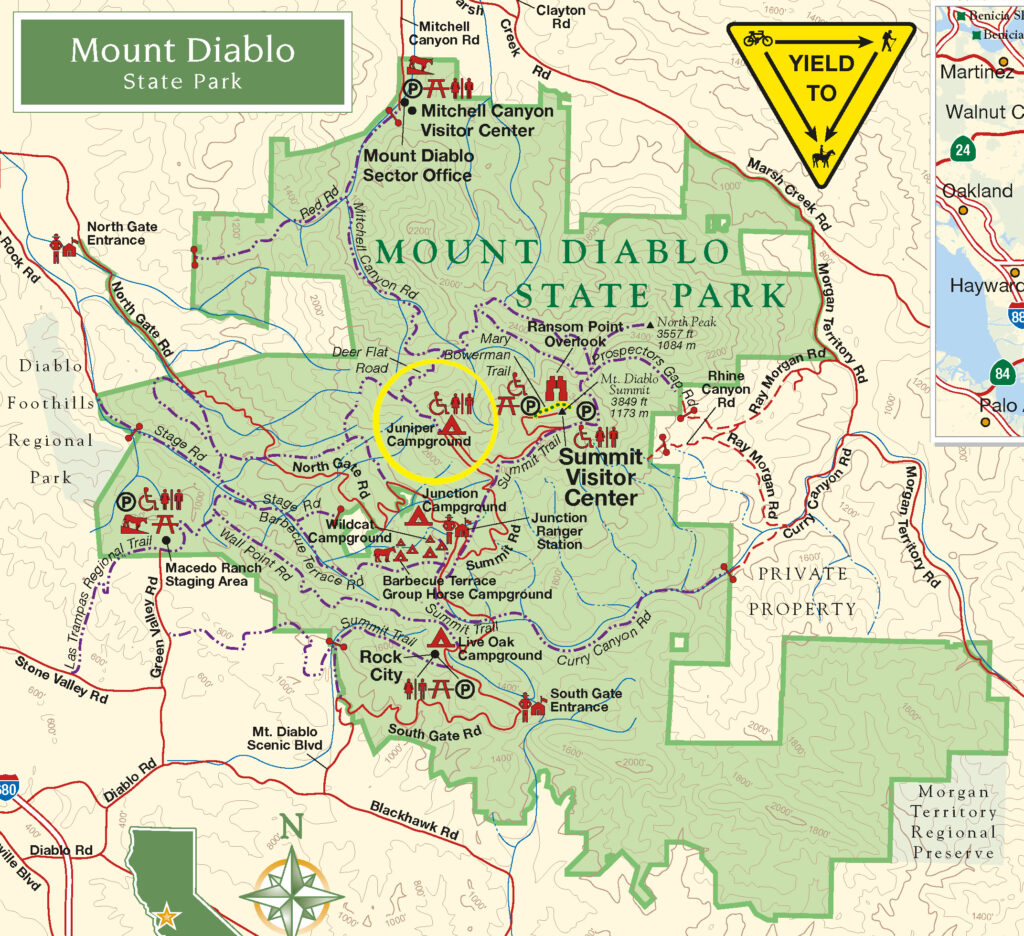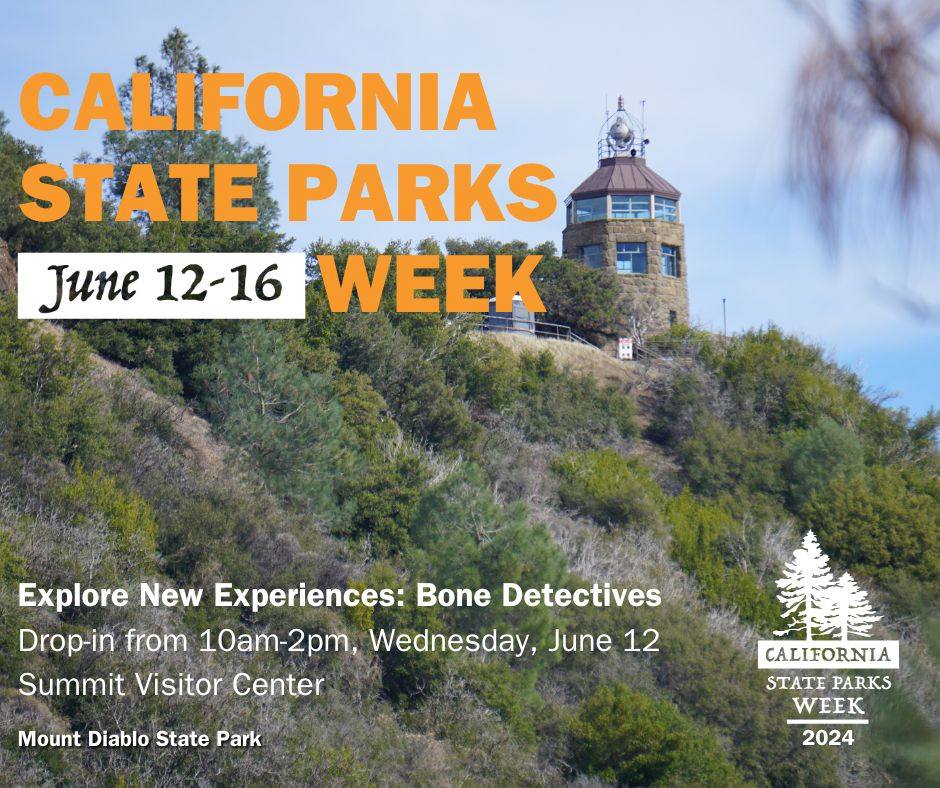Park Happenings for July: News from the East Bay Regional Park District
Wednesday, July 3rd, 2024
No fireworks in the parks, feedback needed on Briones Pilot Project, campfire, state bat-related activities, save the date for National Night out
For information regarding recent park closures due to increased wildfire risk, visit www.ebparks.org/about-us/whats-new/news/swim-facilities-and-shoreline-regional-parks-remain-open-through-heat-event.
By Dave Mason, Public Information Supervisor, Public Affairs, East Bay Regional Park District
Fire Safety Advisory – Fireworks are not allowed in East Bay Regional Parks. July is a special month full of sunny days and warm summer nights. It’s also a time to take extra precautions due to the increased risk of wildfires in Regional Parks and neighboring communities. With July 4th celebrations coming up this week, remember that fireworks are not allowed in Regional Parks or shorelines.
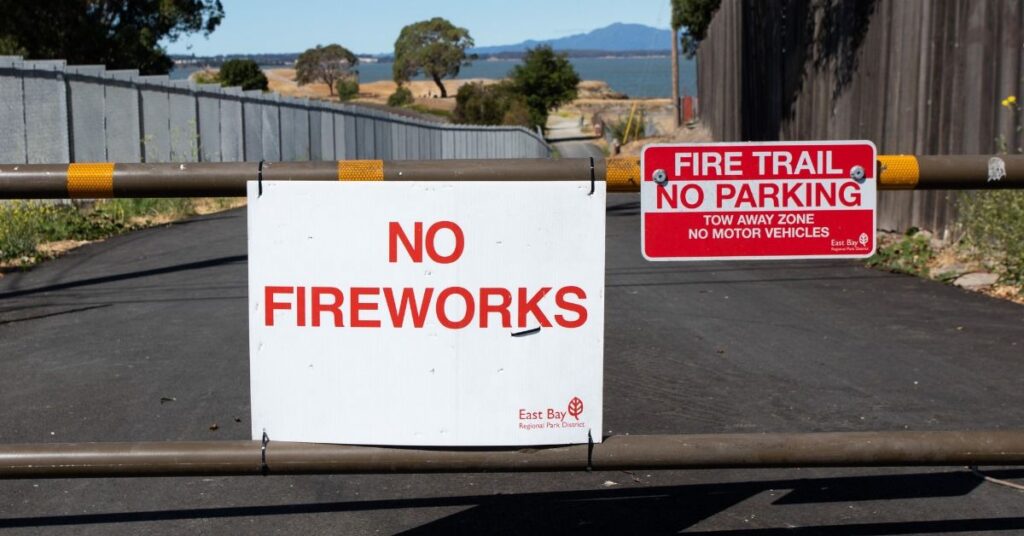
Wildfire safety remains one of the East Bay Regional Park District’s top priorities. Be fire smart and aware of fire danger levels, red flag warnings, and fire safety. The Park District urges all visitors to enjoy their Regional Parks safely and responsibly. Be prepared for the upcoming wildfire season – visit www.ebparks.org and search for “Fire Safety Tips.”
Lakeside Laps on July 20 at Lake Chabot Regional Park. Lakeside Laps is a trail running and walking event hosted by the Regional Parks Foundation in partnership with Brazen Racing Sports & Community. In celebration of the East Bay Regional Park District’s 90th Anniversary, Lakeside Laps proceeds will benefit the Regional Parks Foundation and its mission to connect youth with nature and expand access to parks.
Register today for the family-friendly Trout Trot 5K, 10K, or half marathon – all fitness levels are welcome! The Finish Line Festival will feature snacks, vendors, photo walls, awards, and more. Food and beverages provided by Equator Coffee, Harmless Harvest, and Drake’s Brewing Company. For registration info, start times, and general event information, visit www.brazenracing.com/lakesidelaps.
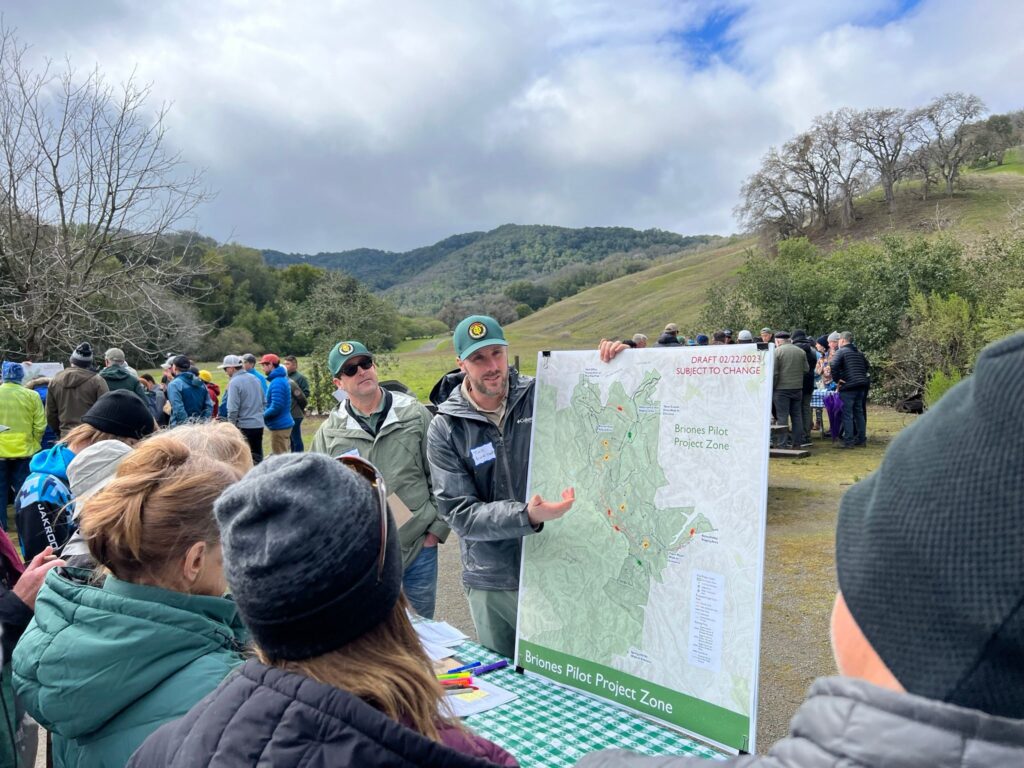
Feedback Needed on the Briones Pilot Project. The Briones Pilot Project was launched in April 2023 in a portion of Briones Regional Park to test new ways to safely share trails, improve the trail experience, and protect habitat, wildlife, and watersheds. At the recent Briones Pilot Project Community check-in meeting, about 75 community members – hikers, cyclists, and equestrians – joined the East Bay Regional Park District staff to discuss the first year of the pilot project and provide their feedback on what has improved and where challenges remain. Feedback is needed! Visit the project webpage to fill out an online survey or drop a comment on the interactive map at www.ebparks.org/BPP.
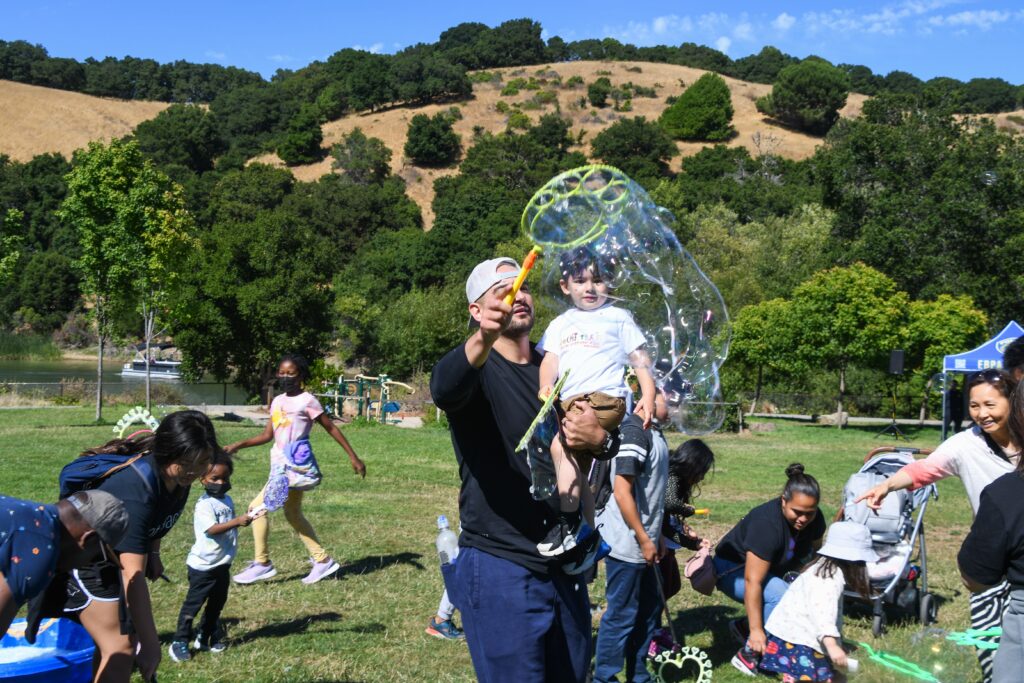
Save the Date: National Night Out on August 6 at Lake Chabot. An exciting evening of community bonding and fun at Lake Chabot awaits! The East Bay Regional Park District is hosting its second annual National Night Out on August 6 from 4-7 p.m. at Lake Chabot Regional Park, where parkgoers are invited to come together to celebrate and strengthen community ties. Meet the Park District’s public safety officers, firefighters, lifeguards, and park rangers who are instrumental in keeping the community safe. Visit with Park District naturalists at the Mobile Visitor Center and learn about the nature exhibits on display. Stroll around Lake Chabot and enjoy the lake’s serene beauty. All are welcome to this FREE event. For more information, visit www.ebparks.org/nno.
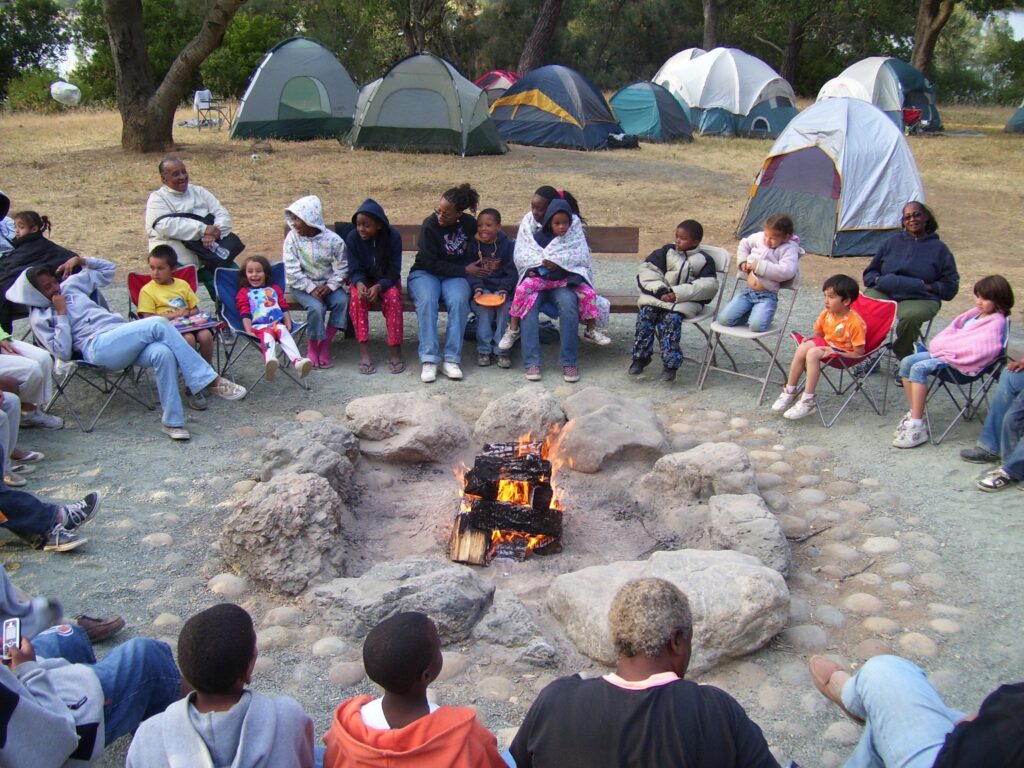
Campfire gatherings first became popular in the United States around the turn of the last century, with growth in the National Park system. At the time, there was an incentive to get more children out of urban cities and into the nature of these new National Parks, and the result was the emergence of summer camps and campfire programs. By the 1920s, more than 1,000 summer camps were offering outdoor activities such as canoeing, archery, hiking, arts and crafts, and fire-making. These camps also developed new traditions like campfires, s’mores, and sing-a-longs. Today, this tradition continues throughout the East Bay Regional Park District.
Experience unforgettable evenings under the stars with captivating campfire programs at Del Valle Regional Park, Big Break Regional Shoreline, Dumbarton Quarry Campground on the Bay, and Anthony Chabot Campground. These family-friendly events offer nature education, storytelling, and stargazing, while fostering a deep appreciation for the outdoors. Engage in hands-on activities, learn about local wildlife, and connect with the community around the warmth of the fire with naturalist-led campfire programs. Go to www.ebparks.org/calendar and search for “campfire.” Campfire programs are subject to change due to Park District fire restrictions and National Weather Services-Bay Area Fire Advisories and Red Flag Warnings.
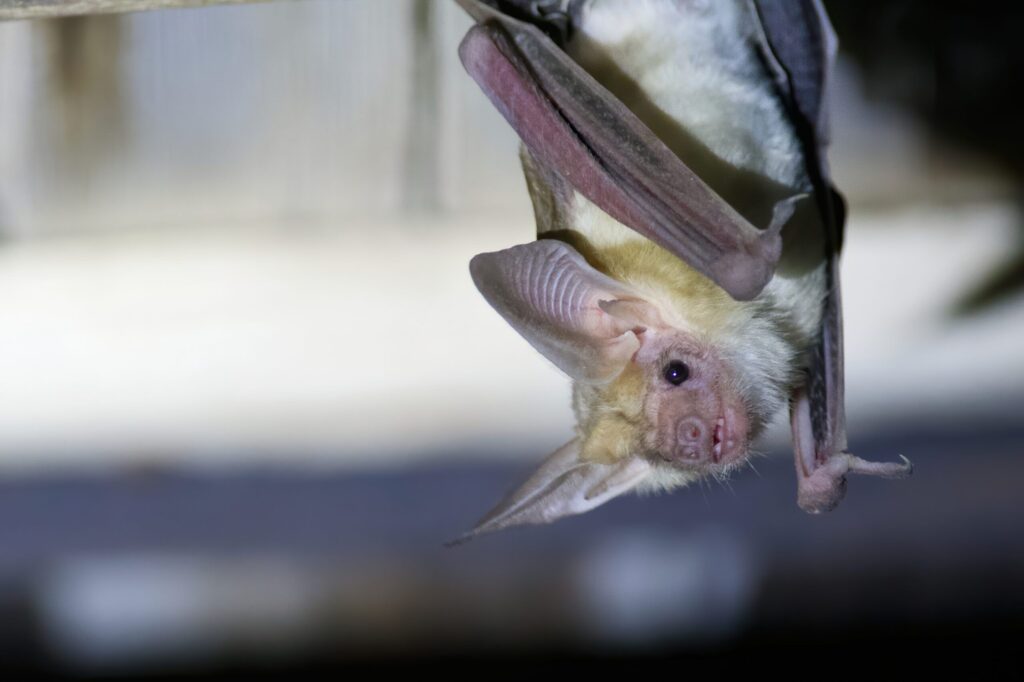
Did you know that California has a state bat? The pallid bat was designated as the California state bat in October 2023. Its golden fur, diverse range of habitats, and positive effects on the environment fit in well with the rest of the Golden State’s symbols. These golden-haired pallid bats, as well as other bat species, are found at parks throughout East Bay Regional Park District. Join Park District naturalists for bat-related activities all summer long! Go to www.ebparks.org/calendar and search for “bats.” Learn more about the bats of the East Bay at www.ebparks.org/programs/digital-learning/naturalist-videos/plants-animals/bats.
The East Bay Regional Park District is the largest regional park system in the nation, comprising 73 parks, 55 miles of shoreline, and over 1,330 miles of trails for hiking, biking, horseback riding, and environmental education. The Park District receives an estimated 30 million visits annually throughout Alameda and Contra Costa counties in the San Francisco Bay Area.













